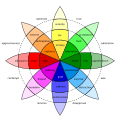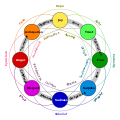| Part of a series on |
| Emotions |
|---|
  |
Annoyance is an unpleasant mental state that is characterized by irritation and distraction from one's conscious thinking. It can lead to emotions such as frustration and anger. The property of being easily annoyed is called irritability.